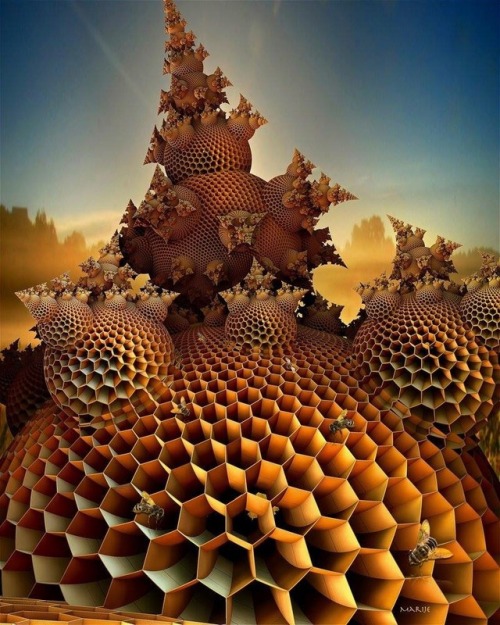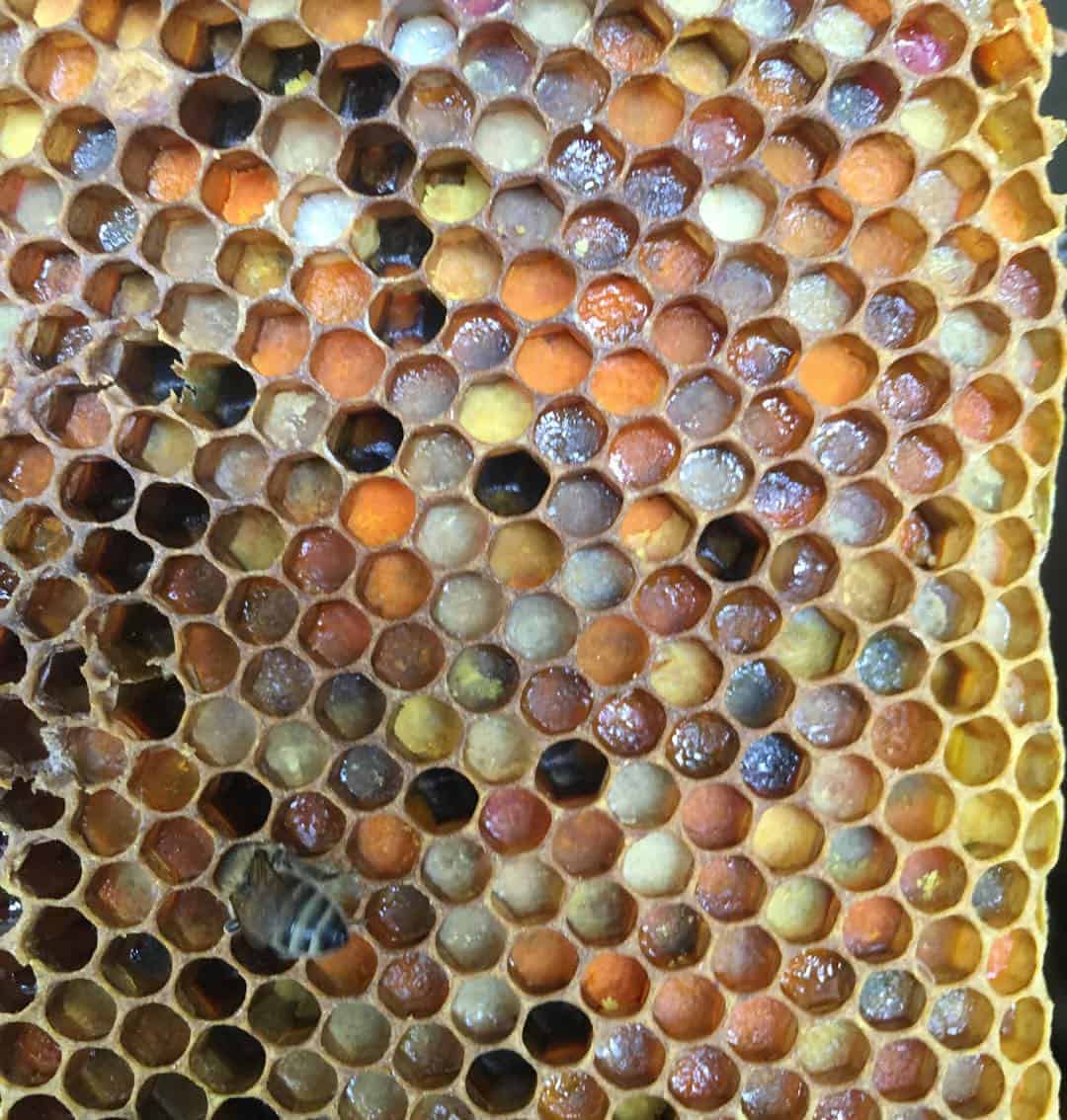


In particular, Bauer and Bienefeld 10 argued that bees do not heat up wax to the temperatures needed for the wax to reach the liquid equilibrium and proposed an alternative explanation based on the mechanical shaping of cells. However, a recent study questioned the possibility that surface tension alone can explain the process. This latter evidence, supporting the interpretation of the honeycomb architecture as the result of blind physical forces rather than biological engineering, lead Ball to state that there does not seem to be much room left for the honey bees’ engineering prowess 9. More recently, Pirk and collaborators provided support to this latter hypothesis by studying the wax condensing around an array of rubber bungs 5, while Karihaloo and coworkers reached a similar conclusion by modelling the effect of surface tension at the triple junction between adjacent cells 6. Rasmus Bartholin suggested that hexagons would result automatically from the pressure of each bee trying to enlarge as much as possible each cell 7, while Thompson argued that it is surface tension that molds the soft wax into a hexagonal pattern of cells 8, as a result of the formation of three 120° angles between the wax walls converging in a triple junction. However, cells are not hexagonal when they are built but rather circular, as already suspected by ancient observers and easily demonstrated by studying wax combs in the early stages of construction 5, 6. Varro suggested the correspondence between the bees’ legs number and the angles of the comb cell might hint of a possible construction method 1 in any case, the geometers’ skills of bees were not questioned for a long time. However, for a complete understanding of a given phenomenon, both the proximate and ultimate sets of causes have to be explained and interpreted 4 in other words, both the why and the how questions need to be addressed. Precise data about food conversion rates in the production of beeswax 3 support the intuition of the great naturalist. Eighteen centuries later, Darwin surpassed the early teleological explanations noting that the swarm wasting least honey in the secretion of wax would have succeeded best 2. Why do bees build this kind of cells? How can they achieve such a spectacular structure? Early natural philosophers, like Marcus Terentius Varro 1, based on the observation that hexagons possess the highest surface/perimeter ratio, compared to other polygons that can be used for tiling the plane, suggested that honey bees build their hexagonal cells in order to achieve the best economy of material. Random transitions among these stacking patterns can occur as faults in the crystal structure of H 3LiIr 2O 6, which quantitatively describe the observed XRPD.The hexagonal shape of the cells of the bees’ honeycomb has intrigued laypeople and scientists for ages. From the constitution of the layers, different stacking patterns with similar amounts of strong O–H⋯O contacts are considered. We assumed that the overall stacking pattern of the layers in the structure of H 3LiIr 2O 6 is governed by interlayer O–H⋯O contacts.
#The honeycomb pdf#
DIFFaX-simulations, structural considerations, high radial distances of the PDF function and a Rietveld compatible global optimization of a supercell were employed to derive a suitable faulting model and to refine the microstructure using the experimental data. The low radial distances of the PDF function, derived from synchrotron XRPD data, as constraints to stabilize the structural refinement. The ideal, faultless crystal structure was obtained by a Rietveld refinement of the laboratory XRPD pattern while using the LiIr 2O 6 3−-layers of α-Li 2IrO 3 as a starting model. Heavy stacking faulting of the sheets is indicated by anisotropic peak broadening in the X-ray powder diffraction (XRPD) pattern. The crystal structure of H 3LiIr 2O 6 consists of sheets of edge sharing LiO 6- and IrO 6-octahedra forming a honeycomb network with layers stacked in a monoclinic distorted HCrO 2 type pattern.

A powder sample of pure H 3LiIr 2O 6 was synthesized from α-Li 2IrO 3 powder by a soft chemical replacement of Li + with H +.


 0 kommentar(er)
0 kommentar(er)
